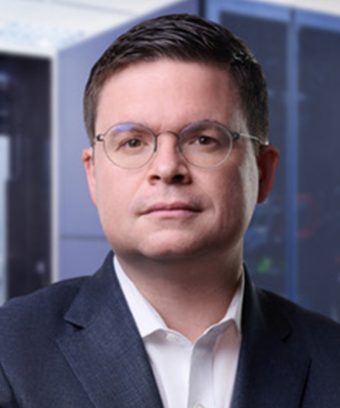Reading the Tea Leaves on China’s New Central Science and Technology Commission
China is already a growing scientific superpower, and has big, bold ambitions to conduct cutting-edge research. Now, the Communist Party is hoping to leverage a new and secretive party organization to rally scientists with patriotism and push the country to new frontiers in science. In 2023, the Chinese Communist Party (CCP) established a new Central Science and Technology Commission (中央科技委员会 or CSTC) that sought to level up the importance of science and technology (S&T) within China and better coordinate Chinese government policies. The move was widely seen as an attempt by China to accelerate technology development and self-sufficiency in response to escalating U.S.-China tensions. Another important goal was to set national S&T priorities and motivate China’s S&T workforce to work towards national and party goals, not just answering their own scientific curiosities.
More than a year has passed since the CSTC was established, and, according to state media, it has “created a new atmosphere for China’s S&T work” and “dramatically improved the effectiveness of national S&T governance and policies.” But few other details have been formally disclosed by the central government.
However, some new limited information cited in this writeup, disclosed through both formal and informal channels, has appeared in various forms about the makeup and focus of the CSTC. These new details can help China analysts better understand changes underway in China’s S&T policy ecosystem.
New details on the inner workings of the CSTC
Official state media disclosed that the only trained engineer in the CCP Politburo Standing Committee, Vice Premier Ding Xuexiang (丁薛祥)—and not Xi Jinping himself—is the official chair of the CSTC. Ding studied engineering as an undergraduate, has a master’s degree in scientific management, and for nearly two decades worked as a materials science researcher, administrator, and deputy of Shanghai’s S&T commission. This is notable, as it likely indicates that Xi believes the CSTC is best run by someone with deep familiarity with science and technology. Ding is an ideal fit.
While the rest of the committee’s makeup has not been fully disclosed, some Chinese ministries, such as the Ministry of Natural Resources, have divulged that they sit on the commission. This indicates that standing members of the CSTC very likely include minister-level officials from China’s key S&T-related ministries, broadly defined.
More details have also come to light regarding the role of the CSTC General Office, which is housed within China’s Ministry of Science and Technology (MOST) and is thought to be led by the MOST minister and director of the CSTC General Office, and is responsible for managing the day-to-day activities of the CSTC. This includes the review and approval of new government-backed S&T labs, as it was disclosed that a new lab in Xinjiang for “super deep oil fracking exploration” was approved by the CSTC office last year. The CSTC office is also, according to a document published by the Ministry of Industry and Information Technology, working with the Ministry of Finance to conduct periodic reviews of China’s National Core R&D Project, and receives semi-annual reports from the ministries regarding implementation of their S&T projects. The CSTC General Office also manages the distribution of reports regarding domestic and international S&T developments to both CSTC members and government ministries.
The CSTC meets quarterly—we think
Disclosures from provincial government pronouncements and news reports indicate that the CSTC appears to be meeting on a quarterly basis. A report from the Beijing Municipal Government indicated that, as of January 2024, the CSTC has already met at least three times. Other central-level commissions, such as the Central Comprehensively Deepening Reforms Commission, also appear to meet on a similar frequency. It also appears that there are “full members” and “standing committee members” of the CSTC, meaning that the CSTC can conduct some work with only a few members present.
Provincial commissions offer important clues about the national CSTC and its focus on core technologies and party ideology
Through nearly a half-dozen meetings of provincial-level equivalents of the CSTC, we can better discern the likely focus and philosophy of the CSTC, which the local commissions probably mirror. Their main priority continues to be core bottleneck technologies and strengthening party leadership over the national S&T system. The provincial S&T commissions also emphasize better integration and coordination of funding, resources, and institutions such as labs, state-owned enterprises, and universities to increase China’s S&T output. The provincial commissions’ meetings also consistently refer to political guidance from Xi on S&T, including his recent S&T slogans “the four facings” (四个面向) and “walk with two legs”(两条腿走路). The “four facings” directive was given by Xi to Chinese scientists in 2020, and means that Chinese scientists must face the “global science and technology frontier, the main battlefield of the economy, major needs of the nation, and the livelihood and health of the people.” Xi’s concept of “walk with two legs” was introduced during a Politburo meeting on basic science and means that Chinese scientists must have one leg focused on “goal-oriented” innovation and the other on “free exploration,” meaning they need to be attentive to national priorities and needs, even when conducting basic exploratory research. As other IGCC research has identified, already this means scientists are spending more time on party ideology than research, and scientific and administrative decisions are made with the party and nation-state top of mind.
The CSTC plays an important regional S&T policy coordination role
The CSTC appears to have a significant role in coordinating regional S&T development. Consistent with the description of the CSTC released last year, it has been disclosed that the CSTC reviews and approves regional S&T zones and development projects. According to a Xi’an city news outlet, the CSTC in November of 2023 issued a “Regional Innovation System Construction General Plan” that selected Beijing, Shanghai, and the Guangdong Greater Bay Area to establish “international innovation cities” and Chengdu-Chongqing, Wuhan, and Xi’an to establish “regional S&T innovation centers.” The specific plans by the Beijing and Shanghai governments to establish science and innovation development zones were reviewed and approved by the CSTC, according to local government disclosures.
Consistent with this theme, the CSTC has also apparently set plans for evaluating local regional innovation clusters and coordinating inter-regional development. Another government report indicated that the CSTC has attempted to centralize and better coordinate approval for the establishment of new national innovation platforms and their geographic distribution. This includes better coordinating and integrating responsibilities and geographic placement of national manufacturing innovation centers, national labs, national innovation technology centers, and national industrial innovation centers.
The CSTC plays a major role in spending decisions
The CSTC has also been intimately involved in the reform, oversight, and approval of S&T spending priorities. When the Ministry of Finance published the Measures for the Management of Funds Guided by the Central Government for Local Science and Technology Development, which are regulations that help to coordinate the allocation of S&T funding, they disclosed this was a “major effort by the CSTC,” having been reviewed and approved by the committee. The CSTC has also been reviewing and approving new national S&T megaprojects, including a new national megaproject for “deep earth exploration and mining,” as disclosed by China’s Geological Survey Agency, which will focus on the science, technology, equipment, and specific mining projects for exploring the deep earth and its minerals. Another new “smart grid” national megaproject was also announced in 2024 by China’s National Energy Agency that will focus on intelligent electric grid technology and resiliency. While it was not disclosed whether the CSTC had a hand in the later project, given that it approved the deep earth project, it likely did so for this one as well. Neither of these two megaprojects were in China’s original list of megaprojects, and appear to be a new focus.
There’s still much we don’t know
While these revelations start to provide a clearer picture of the CSTC and its mission, there is much we still do not know. This includes the full makeup of the Commission, and whether it has management authority for other key issues such as planning, approval, and management of major scientific infrastructure—which still appears to reside with the National Development and Reform Commission—and the CSTC’s role in conducting oversight and management of military-related S&T affairs. Little has also been disclosed about the CSTC’s guidance and specific efforts to help China respond to tightening U.S. technology restrictions such as export controls, or which “chokepoint technologies” it is most concerned about. For example, there is almost no public reference to the CSTC in relationship to semiconductors or artificial intelligence, two hotly contested technologies between the United States and China, although it is almost certainly playing a role behind closed doors. In addition, important S&T policies such as the new Medium & Long-Range Plan for National S&T Development (2021-2035) and the 14th Five-Year Plan for S&T Development have not, and are likely never, to be made public. CSTC’s continuing secrecy indicates that, for now, Chinese leadership has determined that the less the outside world knows about its S&T plans and intentions, the better.
Jimmy Goodrich is an IGCC nonresident fellow. The views expressed by the author are his own and do not reflect those of any organization with which he is affiliated.
Thumbnail credit: UN (Flickr)

Global Policy At A Glance
Global Policy At A Glance is IGCC’s blog, which brings research from our network of scholars to engaged audiences outside of academia.
Read More